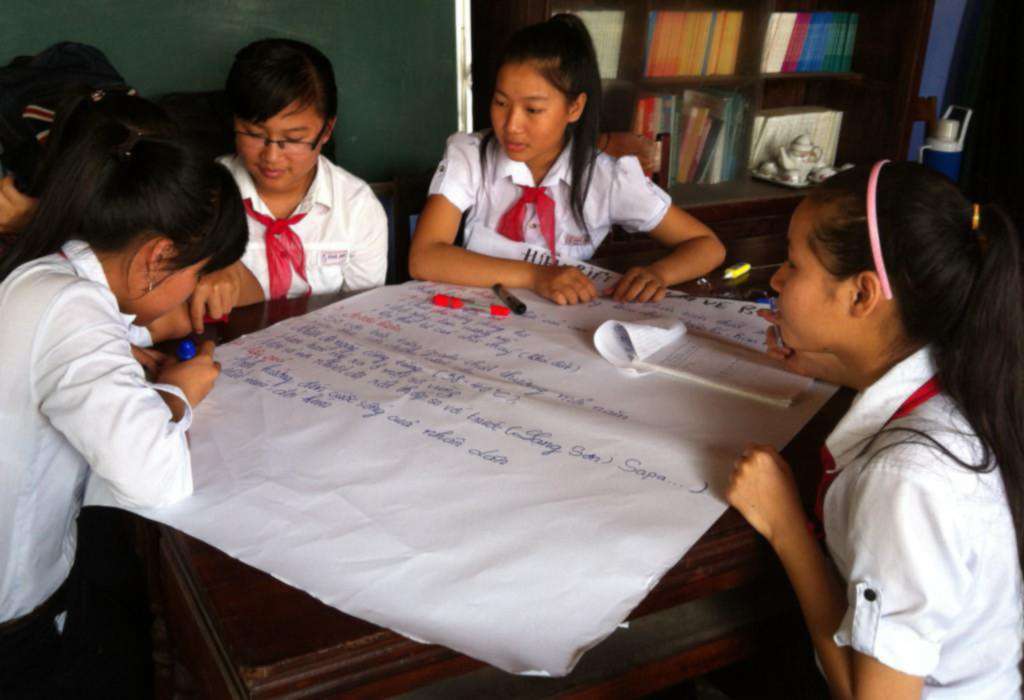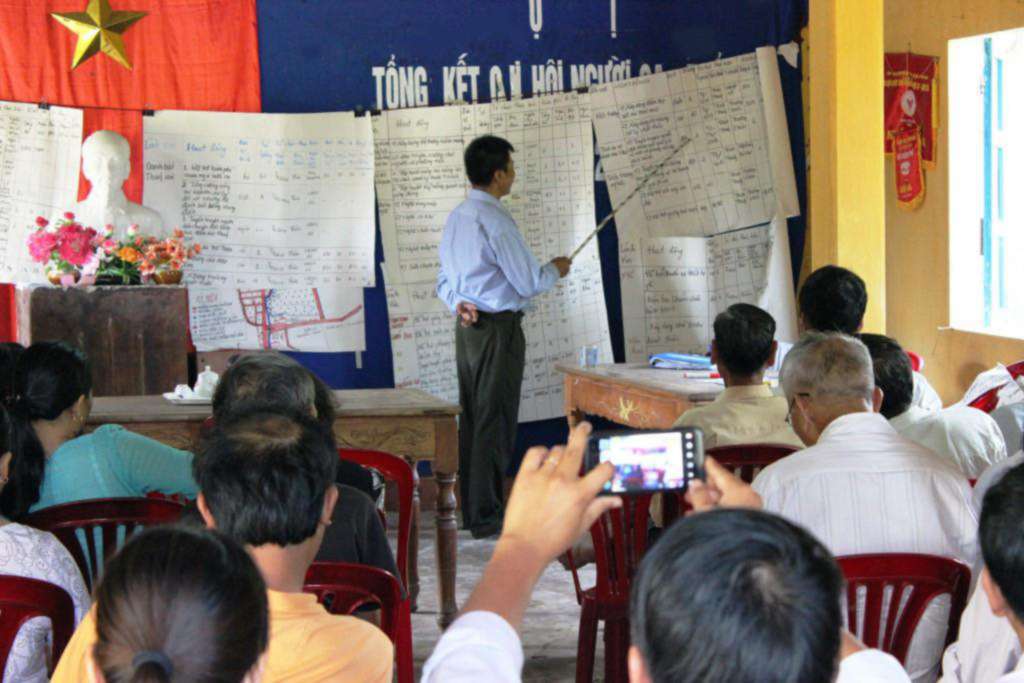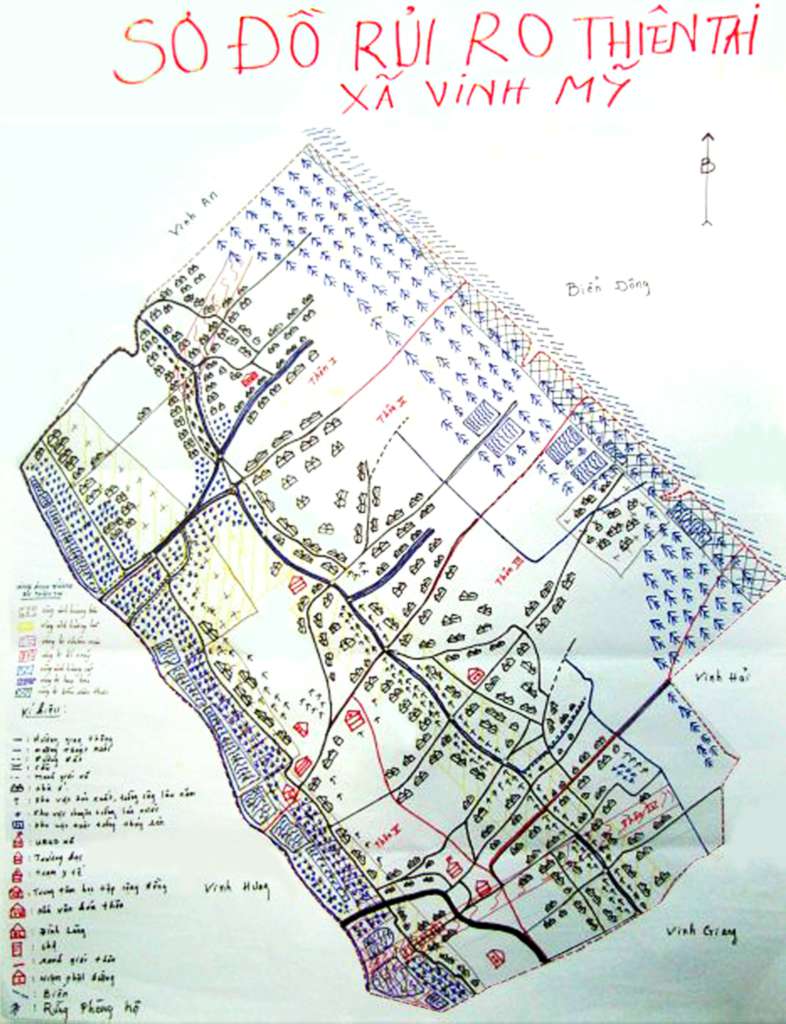Vietnam - Effective use of participatory methods for climate-adapted local planning in Thua Thien Hue
A major objective of the Climate-Adapted Local Development and Innovation Project, VIE/033 was to promote democracy and community ownership by enabling communities in Vietnam’s Thua Thien Hue province to become not only the active partners in local development, but also its engines. During inception and implementation phases this bold objective justified the project’s strong focus on community mobilisation, participation and ownership, considered critical for delivery, impact and long-term sustainability. Thus, the Project implemented a range of activities aimed at increasing local capacities and capabilities of communities and government staff in support of improved local governance.
Two interventions in particular were considered very important for the development and application of participatory methods for climate-adapted local planning: Commune Vulnerability and Capacity Assessments (CVCA) and the Local Participatory Planning Process (LPPP).

Commune Vulnerability and Capacity Assessments (CVCA) reports were developed for all 29 project target communes with the active participation of communities, mass organisations and local government staff, in line with the national and provincial policies and plans on Climate Change Adaptation (CCA), Disaster Risk Reduction (DRR) and Inter-Coastal Zone Management. Considering the context of Thua Thien Hue province, where the impact of climate change on the coastal and lagoon environment and people’s livelihoods is quite dramatic, such CVCA reports are an essential tool for planners to understand and assess current situations, and design effective interventions for capacity building and infrastructure development in support of innovation, risk mitigation and adaptation of livelihoods.
CVCA reports were subsequently used as important building blocks during four-day planning sessions with communities in all target villages as part of the Local Participatory Planning Process (LPPP). 224 Village Development Plans were prepared for each target village by a total of 8,355 household representatives. These were then inserted into Commune Development Plans and further integrated into the government’s Five-Year Socio-Economic Development Plans 2016-2020.

A participatory planning manual developed under a previous Luxembourg-funded project was substantially revised and updated, with integration of new components such as Change Adaptation (CCA), Disaster Risk Reduction (DRR), environmental protection, gender equality and women’s economic empowerment, as well as market development for agricultural production and services. Government staff at all levels was trained and developed the capacity to use these tools and implement the process.
Commune Vulnerability and Capacity Assessments (CVCA) reports and the Local Participatory Planning Process (LPPP) output were not only used by project stakeholders for annual project planning, but they also became key building blocks for the development of plans under a number of national target programmes, such as a Poverty Reduction Programme for 257 Coastal Communes and the New Rural Development Programme master plans. They are major priorities in the government’s aim for further decentralisation down to the commune level, and with increased community participation.
The process and outputs of the LPPP proved to be major improvements comparing to earlier planning approaches. This was made possible thanks to the training of 32 master trainers and over 700 commune and village staff, as well as a province-wide rollout of the LPPP on-going as from 2016, funded and implemented with government resources.
CVCA and LPPP have demonstrated to be very effective methods for participatory planning in climate-vulnerable localities and communities. They have contributed to a better understanding of key issues, and have led to increased empowerment and ownership of the planning cycle and use of community resources, resulting in ameliorated effectiveness and sustainability of interventions. They have also contributed to a enrich the partnership between villagers and relevant authorities, and have become an essential work element for improved local governance.
As stated in the independent Mid-Term Review from early 2016, VIE/033 Project drives to “sustained institutional changes” and CVCA and LPPP outputs are “enhanced (and notably more participatory) versions of the established 5-year and annual planning processes in Vietnam”.

↑ To the top
